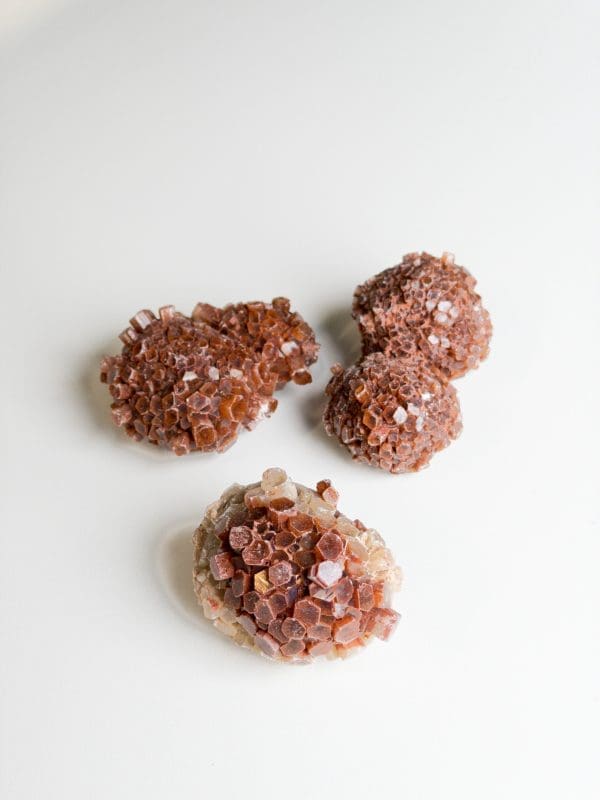Aragonite: A Geologist’s Guide to this Unique Carbonate Mineral
Aragonite is a unique carbonate mineral that has a variety of interesting properties and occurrences in the geologic world. While it may not be as well-known as some of its mineral counterparts, such as calcite and dolomite, aragonite is an important mineral that is worth exploring in greater depth. In this article, we will provide a comprehensive guide to aragonite, covering everything from its crystal structure and physical properties to its occurrence and uses in the geological world.
First, let’s start with the basics. Aragonite is a type of calcium carbonate mineral, which means it is composed of calcium, carbon, and oxygen atoms. It has a trigonal crystal system and typically forms in the shape of elongated, needle-like crystals. These crystals can be found in a variety of colors, including white, gray, yellow, and brown, and can sometimes have a transparent or translucent appearance.
One of the most interesting properties of aragonite is that it can exist in two different crystal structures, depending on the conditions under which it forms. The first structure is called the orthorhombic form, which is the more stable and common form of aragonite. The second structure is called the monoclinic form, which is less stable and only occurs under certain conditions.
In terms of its physical properties, aragonite is a relatively soft mineral, with a Mohs hardness of 3.5 to 4. It has a specific gravity of 2.9 to 3.0 and is not very dense, making it easy to scratch with a fingernail or a sharp object. It is also quite brittle and can easily break or shatter if subjected to too much stress or pressure.
Aragonite is commonly found in a variety of geological settings, including cave formations, coral reefs, and metamorphic rocks. It is often found in association with other carbonate minerals, such as calcite and dolomite, and can be an important component of sedimentary rocks like limestone and marble.
One of the most famous occurrences of aragonite is in cave formations. When water containing calcium carbonate and other dissolved minerals flows through a cave, it can deposit these minerals onto the walls and ceilings of the cave, forming beautiful and intricate patterns. These patterns are called speleothems, and they can take the form of stalactites (hanging from the ceiling), stalagmites (growing from the floor), and other formations. Aragonite is often a major component of speleothems, along with calcite and other minerals.
Another important occurrence of aragonite is in coral reefs. Coral reefs are formed by small, tube-shaped animals called coral polyps, which secrete a hard, calcium carbonate skeleton around their bodies. As these skeletons accumulate over time, they form the structure of the coral reef. Aragonite is a major component of these coral skeletons, along with calcite and other minerals.
In addition to its occurrence in cave formations and coral reefs, aragonite can also be found in metamorphic rocks, such as marble. Marble is a metamorphic rock that forms when limestone or other sedimentary rocks are subjected to high pressures and temperatures, causing the minerals to recrystallize into a new, more stable form. Aragonite is often present in marble, along with calcite and other minerals.
In terms of its uses, aragonite is not as valuable or widely used as some other minerals, such as quartz or diamond. However, it does have some important industrial applications. For example, it is used in the production of cement, which is a critical component of many construction materials. It is also used in
the production of agricultural lime, which is used to neutralize soil pH and improve soil fertility. In addition, aragonite is used as a filler in a variety of products, such as plastics, paints, and rubber.
Aragonite is also valued for its beauty and rarity, and it is sometimes used as a gemstone or decorative element in jewelry and other decorative objects. It is often used in combination with other minerals, such as quartz or turquoise, to create unique and eye-catching pieces.
In summary, aragonite is a unique and fascinating mineral that is worth exploring in greater depth. It has a variety of interesting properties and occurrences, and it has some important industrial applications. Whether you’re a seasoned geologist or simply have an interest in the earth’s natural wonders, learning more about aragonite is sure to be an educational and enjoyable experience.

